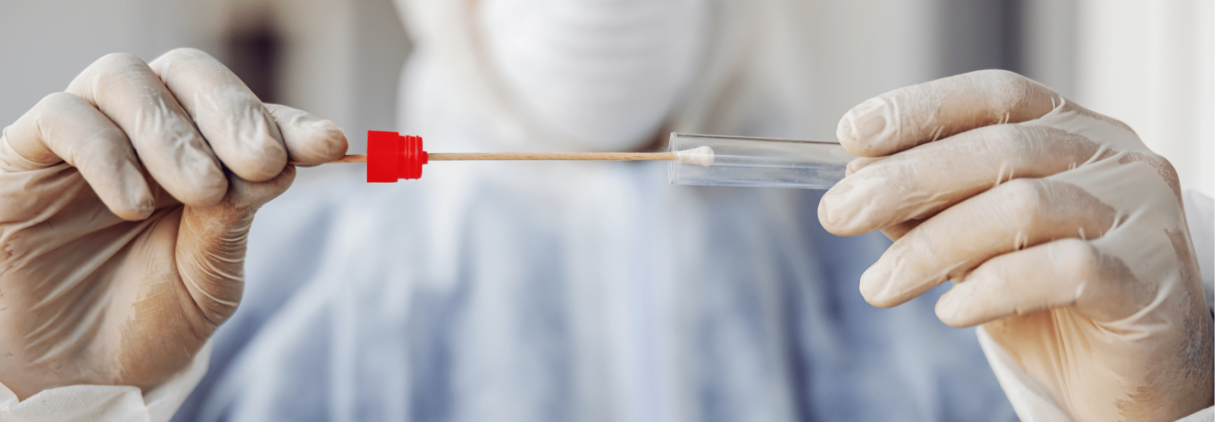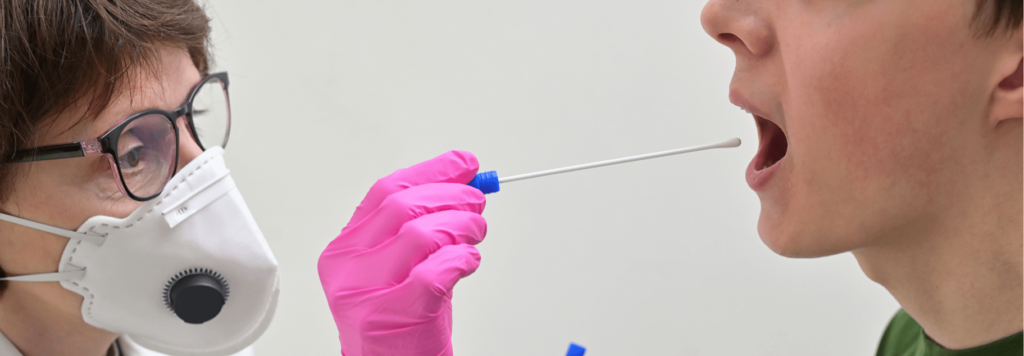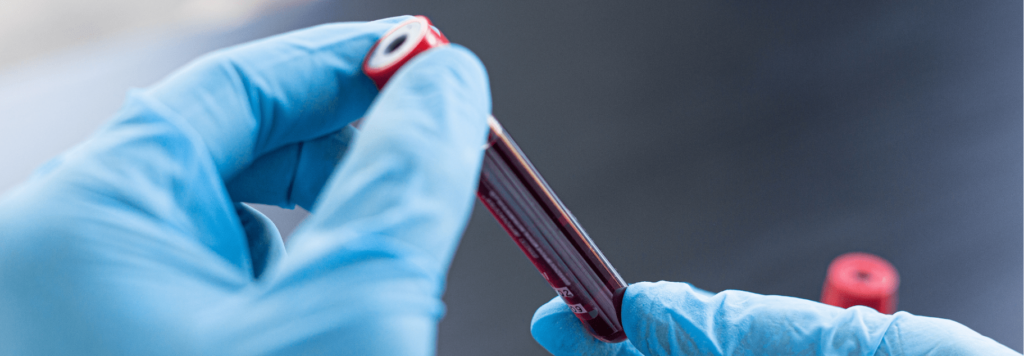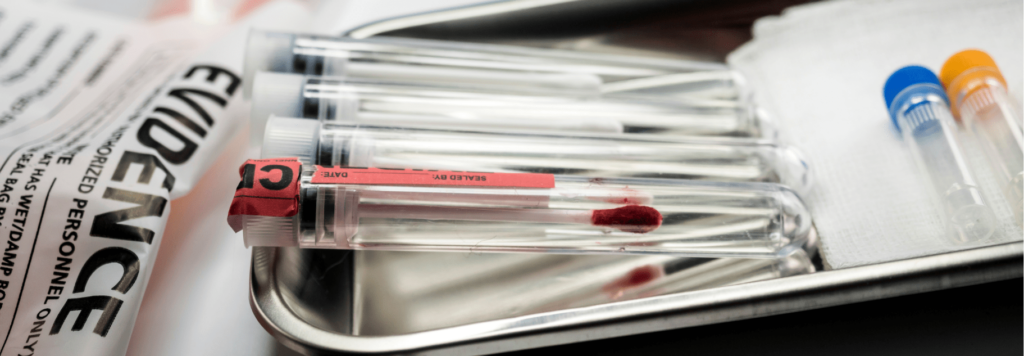
In the quest for unraveling the mysteries hidden within the intricate strands of DNA, the process of DNA collection emerges as the pivotal gateway to a world of invaluable genetic insights. DNA collection serves as the foundational step in harnessing the power of genetics, offering a profound understanding of health risks, ancestral origins, and even personalized pharmacogenetic considerations. Its significance extends its reach to a multitude of industries including biotechnology, ancestry and genealogy, healthcare, forensic science, and beyond.
At its core, DNA, the blueprint of life, stands as an archive of information that carries the essence of our existence. Through meticulous DNA collection, we unlock the secrets encrypted within our genetic code, enabling us to pave the way towards a healthier, more informed future.
Various avenues exist for the collection of DNA samples, each method carefully tailored to cater to different contexts and preferences. Buccal swabs, a non-invasive and painless technique, delicately harvest cells from the inner cheek’s lining. Similarly, saliva, often seen as a convenient method, holds a treasure trove of genetic data waiting to be extracted. For more traditional routes, blood samples stand as a gold standard, offering a wellspring of genomic insights. Even hair samples, seemingly unassuming, house DNA fragments that whisper stories of our genetic makeup.
The significance of these DNA collection methods echoes across domains. In the realm of biotechnology, DNA samples are the foundation upon which groundbreaking research and innovation are built. Ancestry and genealogy endeavors trace our roots with unprecedented precision, connecting us to our heritage in ways we once thought impossible. Healthcare, guided by the insights gained from DNA, moves towards a future of personalized medicine, tailoring treatments based on individual genetic nuances. The art of forensic science, too, relies heavily on DNA collection, enabling the identification of individuals with unparalleled accuracy.
In conclusion, the process of DNA collection is the gateway to a realm of understanding that transcends generations. As we harness the potential of DNA, we pave the way for groundbreaking discoveries and life-altering advancements. From the gentle swab of a cheek to the careful analysis of hair follicles, the methods may vary, but their purpose remains steadfast: to unlock the potential of genetic information for the betterment of humanity.

Imagine a world where the mysteries of your DNA could be unlocked without the prick of a needle or the discomfort of a medical procedure. Enter buccal swabs, a captivatingly non-invasive method that has taken the world by storm, offering a window into your genetic makeup without the hassle. These swabs, delicately designed to gather cells from the inner sanctuary of your cheek, have become a beacon of preference for practitioners and patients alike, revolutionizing DNA collection across the globe.
But let’s not be fooled by its simplicity – the buccal swab method is a powerhouse of versatility, fitting seamlessly into a myriad of applications that span the spectrum of science and life itself. From the profound implications of paternity testing to the gripping narratives of forensic investigations, this unassuming swab transcends boundaries to leave an indelible mark on genetic testing. In the intricate tapestry of ancestry and genealogy, it reveals secrets hidden within our lineage, while research studies harness its potential to unlock new horizons of knowledge. Even personal identification finds a steadfast ally in the buccal swab’s ability to unravel the code that defines us.
A tapestry of diversity is woven as buccal swabs embrace populations across the globe, harmoniously collecting DNA from various demographic landscapes.
The journey from swab to discovery is a swift one, encompassing just a few quick and intriguing steps:
Swab Preparation: Within the confines of an airtight container, the buccal swab awaits its moment of genetic revelation, a sterile sentinel of precision.
Sample Collection: With a simple gesture, participants partake in the unveiling of their genetic essence. A gentle circular motion of the swab against the cheek lining liberates loose cells, like whispers of our biological identity. For those in pursuit of a swift and painless experience, the innovation of plastic swabs, such as the ingenious NextSWAB™, offers a seamless option.
Transportation: The swab, now charged with the profound knowledge of our DNA, finds its sanctuary within a transport media tube – an iSWAB-DNA vessel that safeguards the genetic treasure within.
In the tale of genetic exploration, buccal swabs are the protagonists that bridge the gap between science and the individual, offering a narrative of discovery that’s both accessible and captivating. So, the next time you consider the essence of your genetic code, envision the gentle touch of a swab against your cheek – a touch that opens the doors to the fascinating world of who you are and where you come from.
Embark on the journey of a lifetime with buccal swabs, your passport to unlocking the captivating story written within your DNA.
Featured Products:
The iSWAB™-DNA collection device is a DNA sample collection device for the collection, stabilization, transport, and storage of DNA samples. It is a non-invasive swab-based sampling applicator and is intended to be used for sample collection of buccal cells.
The iSWAB-DNA device also incorporates a proprietary insert that minimizes sample loss during collection, and provides swab-free transportation.The DNA collection kit for humans can capture samples producing high yields of double-stranded, long fragmented DNA while minimizing bacterial DNA contamination under room temperature and challenging transportation conditions.
The NextSWAB™ is a sterile sampling applicator for biological sample collection. It is a non-invasive swab-based sampling applicator intended to be used for sample collection of various sample types including buccal and nasal mid-turbinate, and anterior nares.

In the intricate symphony of genetic exploration, there exists a method that delves deep into the very life force that courses through our veins. Blood samples, a portal into the very essence of our being, paint a vivid canvas of DNA collection that marries the complexity of science with the pulse of life itself. Allow us to take you on a captivating journey into the world of blood-based DNA collection, where veins weave tales of identity, health, and discovery.
Picture this: a healthcare professional armed with sterile needles, collection tubes, and unwavering dedication stands poised to unlock the genetic troves that reside within our circulatory rivers. Venipuncture, the art of extracting blood from the very veins that nourish us, emerges as the portal to a world of applications that bridge the realms of research, medicine, and science.
Forensic analysts turn to the secrets held within blood for clues that solve mysteries etched in time, while clinical trials and research studies tap into the rich well of blood-based DNA for insights that push the boundaries of human understanding. In the realm of medicine, blood samples illuminate the path towards disease screening, unravel the complexities of cancer, and whisper tales of organ compatibility with every drop collected.
As we delve deeper, the process of venipuncture unfolds before us, a ballet of precision that ensures both the integrity of the sample and the comfort of the participant.
The stage is set:
Professional and Patient Preparation: The healthcare professional gears up, their toolkit ready to orchestrate the dance of discovery. The participant, a willing partner in this genetic waltz, offers their arm while the procedure is delicately explained.
Tourniquet Application and Vein Selection: A tourniquet takes its place, cinching around the upper arm to spotlight the veins beneath. The chosen vein is anointed for its starring role in this performance.
Skin Preparation: The stage is sanitized, for infection is a foe to be kept at bay. An antiseptic wipe takes center stage, ensuring the sanctity of the blood’s journey.
Needle Insertion: A brief moment of anticipation, a minor prick, and a sterile needle embarks on its quest into the vein, its mission to collect the essence of life itself.
Blood Collection: The magic begins. The collection tube, a vessel for secrets, captures the blood as it flows, capturing the very code that defines us.
Needle Removal and Pressure Application: The needle exits the stage, leaving only a memory of its presence. A sterile gauze assumes the spotlight, stopping any lingering applause in the form of bleeding.
Transportation: And thus, the collected samples embark on a voyage to the laboratory, where they will undergo the alchemical transformation from fluid to insight.
But the tale doesn’t end here. The tubes that cradle this genetic treasure hold secrets of their own. Among them, HemaSure-OMICS blood tubes from Mawi DNA stand as champions, extracting not just DNA, but also RNA and metabolites from the same source. These vessels of discovery pave the way for research in cancer, organ compatibility, and a plethora of scientific endeavors.
In the world of genetic exploration, blood-based DNA collection takes center stage, orchestrating a performance that marries the art of science with the poetry of life. As we watch blood flow from vein to tube, we witness the very essence of humanity becoming the key to unlocking mysteries that lay hidden in our very cells.
Fecal samples contain hundreds of thousands of microbes that may unlock information on what is happening inside our bodies. These various types of bacteria are unique to everyone and were shown to correlate with disorders such as gastrointestinal infections, malabsorption syndromes, and inflammatory bowel diseases.
Many stool samples are generally collected by placing a clean piece of paper or plastic wrap over the rim of the toilet, defecating, then scooping the feces with a spoon, from the toilet into the sample container and sealed. The paper or plastic wrap and spoon will have to be disposed of. The sample will need to immediately be dropped off at a lab or placed in a plastic bag and refrigerated in the patients home. This process is messy, time restrictive, and often results in low patient compliance for providing stool samples.
The iSWAB™-Microbiome remove the inconvenience from stool sample collection. The Mawi fecal kit includes a flushable FecesCatcher that captures the stool after defecating and a swab to probe the fecesAfter collection, the swab is inserted into the iSWAB™ device. Once the sample is collected in the tube, the swab is removed and tossed. The iSWAB™ device is then sealed and can be sent to a lab for further analysis. The sample can remain at room temperature for several weeks until processed by the lab.
In the lab, a mixture of methods will be used to extract and analyze the DNA and RNA from the stool so that it can be analyzed. This includes qPCR, and sequencing.The lab results will then be able to determine the microbial community that is present inside the human host and provide information related to gut or other health issues .
Bacteria can grow uncontrollably within the collected sample without proper ways of transportation or storage thus not giving the lab an accurate depiction of what is happening inside our bodies. Mawi DNA recommends the use of a stabilizing sample device like the iSWAB-Microbiome. The stool sample will remain stable due to the stabilizing agents within the device. This guarantees that the stool sample the lab receives will be the closest representation of what was active in the gut.

Forensic DNA collection is usually performed in crime scene investigations. This could be swabbing for touch DNA, extracting DNA from bloodstains, bodily fluids, and saliva. In many crime scenes, DNA crime scene samples may be the only clue left.
Mawi DNA created the innovative iSWAB™-ID, a processing tool that can collect DNA from anything that can be swabbed. It is sensitive enough to capture Touch DNA which allows for a double identification: the fingerprint, and the DNA present on the fingerprint.
Forensic DNA collection is hugely important to criminal investigations as it can help law enforcement officers ID both victims and perpetrators of a crime. It is also important for maintaining a chain of custody between lab workers and law enforcement officers.
The ability to collect DNA from crime scenes has only been a recent discovery and wasn’t standard practice until the late 80s. The use of DNA samples in a crime scene has been a large breakthrough in the forensic community, because it offers scientific proof.
Proper DNA collection techniques are crucial for accurate, reliable, and ethical genetic testing.
When collecting data, you face many issues that can stand in the way of procuring high-quality DNA samples. Cross-contamination, low ratio of DNA from targeted host, DNA degradation- are all issues that can interfere with DNA analysis Following the best practices for collection combined with innovative cell collection technology can help ensure these issues are mitigated.
More accurate and valid genetic test results contribute to better patient care, diagnosis, treatment, and counseling, so it’s worth taking steps to ensure this.

While it isn’t relevant to the actual process and techniques of collecting DNA, it’s important to note that there are some ethical considerations. Namely privacy and informed consent.
The individual whose DNA is being collected must be informed about it and allowed to provide consent.
What’s more, their privacy should be maintained, which means only taking data about the person (their name, date of birth, sex, address, etc.) that is necessary to inform them of their results.
There are many methods of DNA collection: saliva, buccal cells, hair, skin, blood, etc., and the person you are collecting samples from can determine which method to use. For most adults, the ability to collect saliva samples may be adequate, but for the elderly and infant population, it may be difficult to provide the volume of saliva needed. Ultimately, collecting buccal sample is the most universal way to gather a DNA sample. This is because only a quick swab of the inside of the person’s cheek is sufficient in providing an adequate sample.
Understanding this issue is what drives Mawi DNA to design sample collection devices that are accessible to everyone. The iSWAB technology is a universal collection option for those who want to ensure their DNA sample is collected properly the first time.
Mawi DNA is redefining and re-inventing non-invasive DNA sample collection. We aim to simplify genomics and proteomics workflows. Contact us today for more information.
A Journey of Innovation and Vision – The Mawi Story…...
Mawi was founded with one major goal: to simplify sample collection, transportation, and storage while making the process as painless as possible, especially for babies and the elderly. The collected ...
READ MOREMawi DNA Technologies Partners with GenoBank.io To Tokenize Our Groundbreaking…...
October 14, 2024 – We are thrilled to announce that Mawi DNA Technologies has officially partnered with READ MORE
Mawi DNA Partners with Tempus AI and Tally Health™ to…...
October 7, 2024 – Customers frequently ask what swabs are compatible with our iSWAB® non-invasive sample collection technology. Although most swab types can be used with our system, incl...
READ MORE